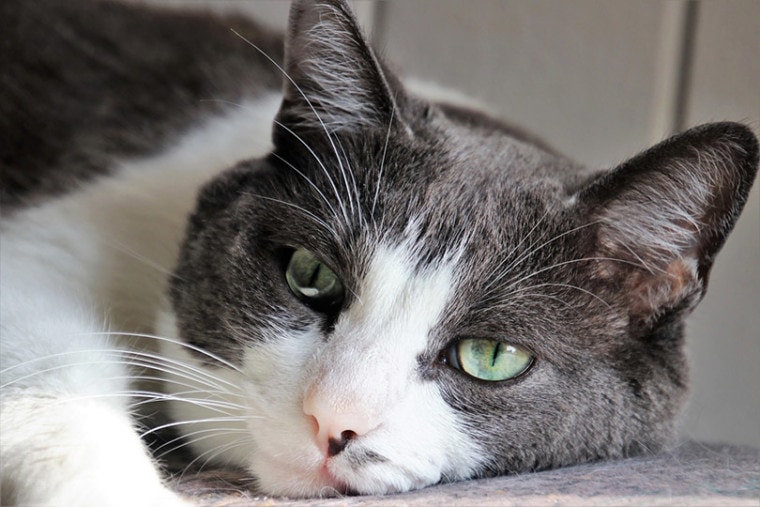
Part of being a well-informed and well-educated pet owner is knowing what’s normal for your cat, including its normal heart rate. When you know what’s normal, you’re in a position to recognize anything that’s out of the ordinary.
Your cat’s heart rate provides an important clue to it’s overall health. An abnormal heart rate can sometimes be a warning sign that something’s not right, and that your cat needs to be seen by a veterinarian. The normal cat heart rate is between 180 and 220 bpm.
What is a Heart Rate?
A heart rate is the number of times the heart beats in one minute. Veterinarians use this value, along with other vital signs, such as respiratory rate, temperature, and mucus membrane color, to understand how your cat’s body is functioning and to detect and monitor health issues.
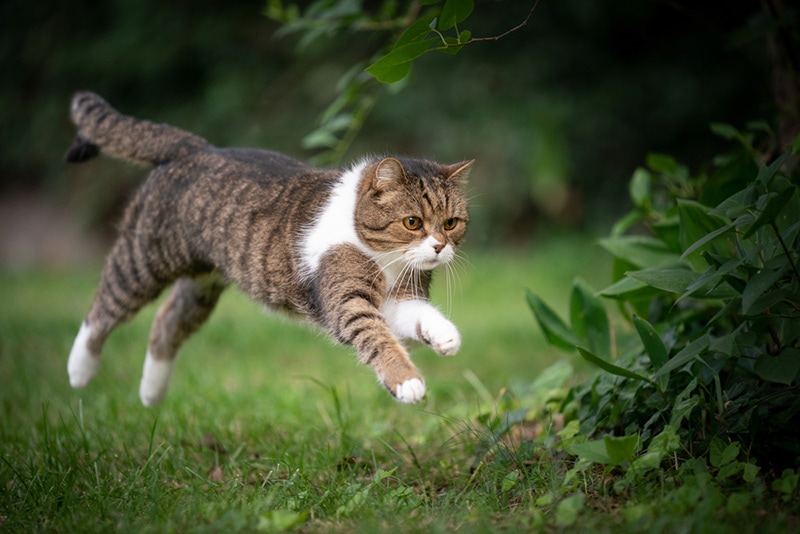
What is a Cat’s Normal Heart Rate?
A healthy adult cat’s heart rate is normally between 180 to 220 beats per minute, while a newborn kitten’s heart rate is between 220 to 260 beats per minute.
If your cat is relaxed, its heart rate will be on the lower end of the scale, while stress, anxiety, and exercise will cause your cat’s heart rate to increase.
How to Check Your Cat’s Heart Rate
If you’re interested in knowing what your own cat’s heart rate is, there’s an easy way to measure it. You’ll need a watch with a second hand, a stopwatch, or your smartphone to monitor the time.
Choose a time when your cat is calm and relaxed, as this will give you an indication of your cat’s resting heart rate. Begin by placing your hand on the inside of your cat’s upper thigh. You should feel a blood vessel, known as the femoral artery, pulsing in this area. Alternatively, place your hand over your cat’s left ribcage, just behind its elbow. You should feel its heart beating below your fingertips. The heart rate will be the same in both places, so use whichever spot is easiest for both you and your cat.
Now, count the number of times you feel your cat’s femoral artery pulse, or its heart beat, through the chest during a 15-second period and multiply this number by four. This will give you your cat’s heart rate in beats per minute (bpm). It may be worthwhile to repeat the count several times to ensure that you get the same value.
What Can Influence A Cat’s Heart Rate?
If a cat’s heart rate is excessively fast, it is referred to as tachycardia, while a slow heart rate is referred to as bradycardia.
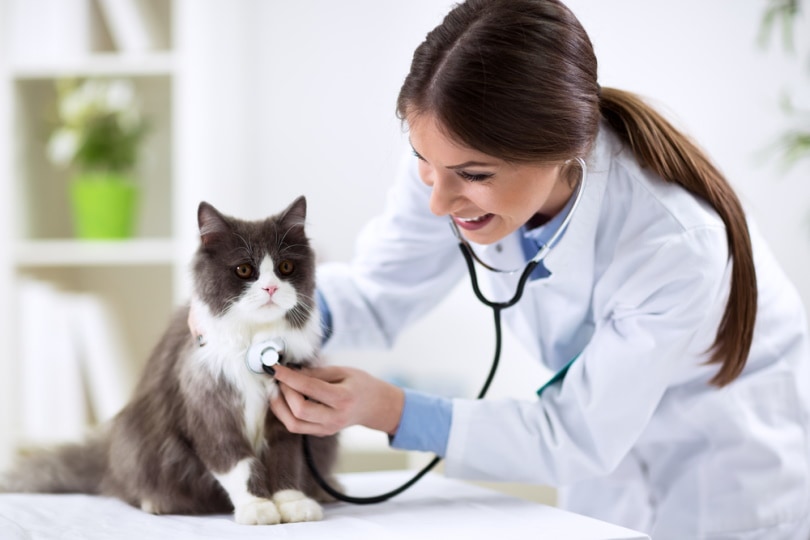
Tachycardia
It’s normal for a cat to develop tachycardia as a physiological response to exercise, stress, fear, or pain. However, when tachycardia occurs at rest, it can indicate an underlying issue. Some of the most common causes of tachycardia in cats include the following:
Hyperthyroidism
A common disorder in older cats, hyperthyroidism is caused by the overproduction of the thyroid hormone from the thyroid glands, situated in the neck. Many body processes are regulated by thyroid hormones, which also help to help control the body’s metabolic rate. One of the classic signs of hyperthyroidism is an increased heart rate.
Anemia
Defined as a low number of circulating red blood cells in the body, which deliver oxygen to the body’s tissues, anemia can lead to tachycardia. This is because the heart is forced to beat faster to compensate for the lowered oxygen delivery to the body’s tissues by the red blood cells.
Heart disease
Also known as cardiomyopathy, heart disease makes it harder for the heart to pump sufficient blood to the rest of the body. As a result, the heart may beat faster to compensate. The most common form of heart disease in cats is hypertrophic cardiomyopathy (HCM).
Electrolyte imbalances
Electrolytes are minerals that are vital to many of the body’s key functions, including the electrical activity of the heart. An electrolyte imbalance occurs when the levels of one or more electrolytes are too high or too low. In certain situations, this can lead to tachycardia.
Human medications
If accidentally ingested, certain human medications—such as weight loss drugs and ADHD medication—can cause a cat to develop tachycardia. Cats seem to enjoy the taste of some of these medications and are, therefore, at risk of getting poisoned.
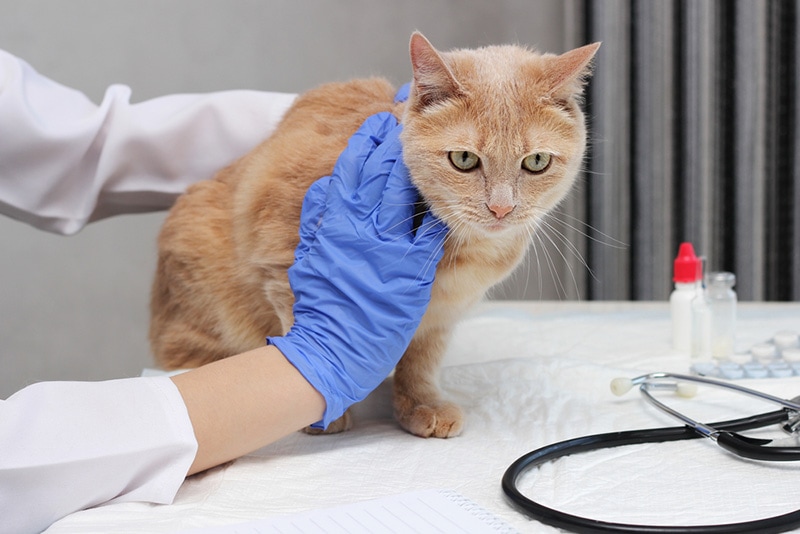
Bradycardia
Some of the most common causes of bradycardia in cats include the following:
Shock
A life-threatening condition brought on by the sudden drop of blood flow in the body, cats may develop shock due to trauma, blood loss, heat stroke, or an allergic reaction. Bradycardia is one of the signs of shock in cats.
Electrolyte imbalances
Not only can electrolyte imbalances cause tachycardia, they may result in bradycardia as well.
Medications
Certain medications, such as general anesthetics and sedatives, can cause a cat to develop bradycardia.
Hypothermia (low body temperature)
When a cat’s body temperature drops below 99° F, it is considered hypothermic. A cat will develop hypothermia when exposed to cold air for an extended period of time, especially if it’s fur is wet. Submersion in cold water may also lead to hypothermia. As the cat’s body temperature drops, the heart rate will slow down and may eventually stop if the hypothermia is not treated.
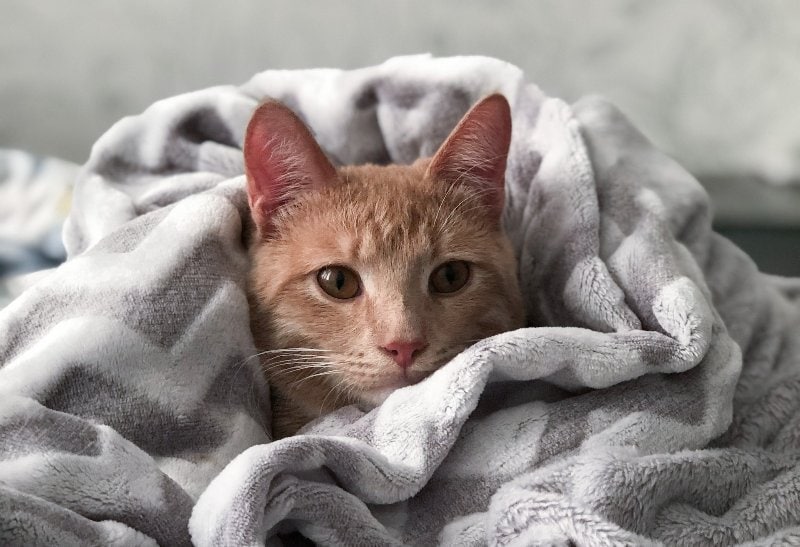
Summary
A healthy adult cat’s heart rate is normally between 180 to 220 beats per minute. Your cat’s heart rate, along with the other vital signs, such as respiratory rate, temperature, and mucus membrane color, provide an important clue to its overall health. An abnormal heart rate, whether it’s too fast or too slow, can sometimes be a warning sign that something’s not right and that your cat needs to be seen by a veterinarian.
Featured Image Credit: pasja1000, Pixabay








